#did martin scorsese direct it really?? where is it then??
Text
the "tumblr community invents a whole mafia movie apparently directed by martin scorsese with an official soundtrack, movie posters, screen caps, and all enough to make one question if that movie really did exist at all like a mandela effect" was not part of my 2022 bingo card
#goncharov#this website is on a whole new level of unhinge jfc#love how this turned out tho#and the commitment to the bit#it's like one big inside joke that everyone is in on#oh god imagine how confused the digital archivist in the future will be#like#was there or was there not a movie called goncharov???#did martin scorsese direct it really?? where is it then??#and they'll never find it#text
132K notes
·
View notes
Text
Trying to Remember.
Was it on Harvey Keitel’s episode or on Gene Hackman’s episode of ”Inside the Actors Studio” where they talked about Martin Scorsese’s film ”Goncharov”.
I don’t Remember.
But I recall it was a favorite role for them.
#goncharov#inside the Actors studio#gene hackman#harvey keitel#usa#america#did martin scorsese direct it really?? where is it then??#martin scorsese
0 notes
Text
The complete shutout for Killers of The Flower Moon after the praise for its nominations is incredibly telling of how performative The Academy always has and will be.
The Osage murders were ignored for decades because the story wasn’t sensationalized enough to be “cared” about by people. It wasn’t a “big enough issue” to be treated with a fraction of respect or attention that it deserved.
Martin Scorsese did about everything he could to get Killers of the Flower Moon on the radar of those who would’ve otherwise completely ignored it [direct and fund it himself, two academy darling actors in main roles], and did so much outside of what they would want [made sure to give platform and voices to the Osage people where most would speak over them, even going as far to credit Robbie Robertson with so much of the films importance due to his indigenous heritage] and it still got ignored. Just a really shocking yet sadly expected decision made by an institution claiming they want to be more inclusive towards minority groups and stories. an institution who, after 96 years, had just nominated the first Native American actress and indigenous composer, yet still found a way to not reward them for their work.
It’s, once more, shocking yet not surprising. In my heart of hearts Lily Gladstone walked away an Oscar winner tonight, as deserved.
#the academy will always be such bullshit#oscars#martin scorsese#killers of the flower moon#lily gladstone#robbie robertson#also robbie deserved that fucking award fucking hell#I can talk also on how his only nomination came posthumously but I shan’t go on right now
191 notes
·
View notes
Text
What I love about the Goncharov meme is how willing most of us are to break kayfabe, because - on the surface level, it's kind, it gives people the opportunity to opt out if this just isn't good for them, and tells people - the secret is that there is no secret, that's the joke, hop right in with a "yes, and"; all are welcome. It's likely to confuse future media historians regardless.
But as someone who really enjoyed House of Leaves I also love it on a meta level because, we are essentially creating a spiritual adaptation of that book, blurring the line between meme and ARG...all based on a pair of shoes. It begs the question, then, what level of this layered narrative are we on, exactly?
I'm not the first person to compare Goncharov to The Navidson Record and I know I won't be the last. It's a very easy, obvious comparison to make - this legendary piece of lost media that everyone has an opinion on, but no one can confirm it's even real? Yeah, at this point in tumblr's collective consciousness, Goncharov is very much like that - the only difference being, we're on the same page and can agree that it's not real and never was.
Except we will place ourselves into a narrative such that it is real. It's an unspoken rule that even if you break kayfabe in other posts, even if you tag your Goncharov posts as "unreality" for accessibility (as you should, especially your original posts), you don't add to a Goncharov meta post, or fanfic, or fanart, in such a way as to even insinuate that Goncharov may not be a real movie. In this layer, that makes you the fool, the uncultured swine. Everyone's seen Goncharov! What do you mean you haven't even heard of it!? What do you mean you doubt it exists!? What rock have you been living under!? If someone earnestly asks what it is, it is to be answered elsewhere - in DMs, in an ask, over Discord, maybe in the replies, but not as an addition to the post that exists "in that reality".
There are a few things we tend to agree upon about Goncharov:
It is a work of fiction. The events of the movie did not occur in the universe - the narrative layer - where we discuss it as a real film.
As stated on the shoe label that created the meme, it is a film directed by Martin Scorsese, written by someone named Matteo JWHJ 0715 (sometimes also written as Matteo JWHJ0715 or Matteo jwhj0715), and it is a mafia movie - namely, it carries the lofty claim of being "The Greatest Mafia Movie Ever Made."
It is about the relationship between Russian and Italian mafia families, set in Naples.
This movie poster is the basis of the canon; the characters listed on it exist and are portrayed by the actors listed.
There is an additional character, Sofia, whose reasons for being omitted from the poster are unknown.
Katya and Goncharov are married; this likely at least started as merely a marriage of convenience, but the full nature of their relationship is hotly debated in a way that highlights many common views of tumblr shipping culture¹.
Katya eventually betrays Goncharov, leading to his death at the end of the film.
There is significant homoerotic subtext between Andrey/Goncharov and Katya/Sofia, much of which plays into the film's themes; however, contrary to the impressions often given by tumblr's fandom culture, it is all subtextual, and while the relationships between Andrey, Goncharov, Katya, and Sofia can be read as significant drivers of the plot, they are far from being the central focus of the story.
Clocks are a major recurring visual symbol.
There is a pivotal "boat scene".
Most other details, however, are left to whoever is currently "analyzing" it. For instance, while many on Archive Of Our Own agree that the character of "Ice Pick Joe" definitely died in the end, with "no beta we die like Ice Pick Joe" being a popular tag for Goncharov fanfiction, at least one early tumblr post implies that the character's fate is undetermined.
The Goncharov meme is simultaneously a love letter to tumblr's fan culture, and a scathing critique thereof², but one of the most underappreciated fascinating things about it is that it forms a nested narrative.
On the innermost layer, we have the unreachable - the film itself. No one has seen it. No one ever will. We're all just trying to imagine it from the shadows on the cave wall. Maybe one day we'll create it, but it will still never truly be the original 1973 film we're all writing about. Making it even harder to recreate and make "real", the mythology includes alternate cuts and regional edits to reconcile the plot points written by different users that undeniably contradict each other.
On the next layer outward, we have the posts about the film. The deep meta. The fanart. The fanfiction. The content "from another universe" where Goncharov is a real classic film that everyone has seen. The layer where we don't break kayfabe. This is a layer we can see the reality of, and contribute to, but never truly live in - it is an imaginary construct. Or is it? The film we're writing about may not exist, but the story we're weaving together from these roleplay writing exercises is somewhat coherent, and the thousands upon thousands of words of meta and fanfiction we write about it are real; one could make a compelling argument that even if Goncharov the film does not exist, the Goncharov fandom is a real fandom. This layer is one foot in the real world, and one foot in a fictional one.
On the next layer, we have the posts about the meme. This can be definitively stated to be real, with no caveats. Posts that discuss how the meme reflects on fan culture, about the self-referential nature of the meme, about the little aspects of online fandom culture it plays with. This is the first layer that can fully be said to be rooted exclusively in the real world.
But even on a layer beyond that, we have posts such as this one, discussing the discussion of the fandom for the fake film - and on yet another layer beyond that (or is it the same one?), we have the future speculation. We have guesses as to what future historians will think of this phenomenon. We have discussions of the precarious and transient nature of information online, questions about what parts of this meme will be archived and which ones will disappear. Will there be historians desperately searching for this alleged lost classic in 50 years? Will it be assumed that the shoes that started the meme were actually a piece of promotional merchandise for a real classic film?
You may notice, then, that the innermost layers are discrete, but once you get into the layers that exist in our reality, they become markedly less so.
This model gives us a structure that can be visualized somewhat like this:
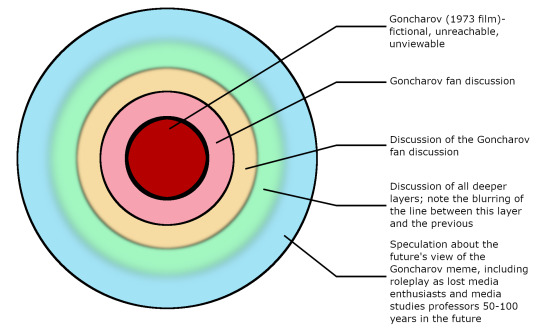
[Image ID: a diagram of 5 concentric circles. The centermost circle is colored in dark red with a thick black outline and labeled "Goncharov (1973 film) - fictional, unreachable, unviewable". The next circle outward is colored in pink, with a thinner black outline, and is labeled "Goncharov fan discussion". The next circle is colored in light gold, with a black outline that blurs into the next circle, labeled "Discussion of the Goncharov fan discussion". The next layer is colored in light green, with a dark outline blurred so thoroughly that its only purpose is to provide some visual contrast for clarity of labeling, labeled "Discussion of all previous layers; note the blurring of the line between this layer and the previous". Finally, the outermost layer is colored in light blue, with a solid black outline, labeled "Speculation about the future's view of the Goncharov meme, including roleplay as lost media enthusiasts and media studies professors 50-100 years in the future". End ID.]
In fact, there are several rules the Goncharov meme has come to follow:
As stated above, any given post is constrained to its narrative layer, to the extent that those layers are discrete. Posts about Goncharov as a real film are not to have additions that break kayfabe. Similarly, posts about Goncharov as a meme are not to have anyone insist the film is real. This may be subject to change as the meme evolves, but it is the rule as of the time of this writing.
You may not add to a post to contradict a claim about the factual nature of what happened on screen, even if it directly contradicts a previous post of yours³. You are, however, encouraged to dispute its implications and get creative to try and reconcile the contradictions. The only exception is in the form of responding to a meme with another extant meme format (e.g., "I get what you're going for OP but x very much did y")
Posts about Goncharov the film are to be treated exactly the same way you would post about a real piece of media. Analysis is to be taken seriously, using real analytical frameworks and devices. Memes are to use real formats. Fanart and fanfiction are to have just as much effort put into their crafting as you would give any real piece of media.
Complaining about bad readings that do not exist, but you imagine someone might make, is encouraged.
You cannot break these rules. Not "you may not", but "you cannot". It is not possible. You can try. You will fail. Your posts breaking these rules will never gain traction, or if they do, they will do so only after being added to in order to make it fit them. The narrative is hungry. You cannot engage it without being absorbed into it. Your only escape is to walk away and not look back⁴.
In other words, the Goncharov meme is not just a meditation on fan culture, but a demonstration and discussion of the intricacy of the relationship between fiction and reality.
House of Leaves is beloved for its complex nested narrative, and again, the comparison is a common one. However, there is a subtle and potentially unsettling difference - House of Leaves did not include its author or its readers nearly as thoroughly as the Goncharov meme does. House of Leaves was written from outside the narrative; the legend of Goncharov is being written from within.
Every single person who blogs about Goncharov makes themself into a character in this story.
The narrative layers in House of Leaves bleed into each other to give a sense of mystery as to what is real and what is not in the universe(s) of the novel. The narrative layers in the Goncharov mythos bleed into each other because we traverse them freely - from the fictional reviews and retellings and analysis, to the semi-fictional drawing of comparisons to real media and the use of this nonexistent movie as a low-stakes vehicle to lightheartedly air one's real complaints with fan culture, to the fully-grounded discussion of Goncharov's impact as a meme, to the philosophical discussion of its multi-layered nature, to the once-again-fictional speculation of how it will be viewed in the future - the same person can visit any of these layers.
But their impact will always be bound by each layer's internal rules, because building a legend - a narrative - will not allow for anything else.
Goncharov does not exist. Goncharov is a narrative labyrinth that contains us all. YOU CANNOT ESCAPE ITS NARRATIVE.
-----------------------------------
1. Tumblr shipping culture is as much of a microcosm of queer studies as it is of media analysis. It, like the Goncharov meme, operates on a minimum of two levels: the level of analyzing a story for potential queer readings, namely in the form of romantic relationships, and opportunities for transformative work; and the level of sociopolitical discussion of queer issues and stereotypes, and how they are reflected in media and the discussion thereof; the latter, particularly, in the form of intracommunity disputes and lateral aggression. For example, the dispute over the nature of Goncharov and Katya's marriage and its level of sincerity is implied in some posts to occasionally cross the line into bisexual erasure. While at the time of the Goncharov meme's emergence in 2022, the discourse within this subculture is much more civil than it once was, it is still very much an environment that stands as a constant reminder that there is no such thing as a truly apolitical space.
Of course, most everyone on this website knows that by now, right?
2. This meme comes at a time when a lot of us are terrified of going back to the way things used to be in tumblr fan discourse. We all joke about the Hamilton HIV fanfic catfish, or The JohnLock Conspiracy, or any number of other major scandals now that they're over; they are hilarious in hindsight, but it's all too easy to lose track of the fact that the human toll at the time was real. DashCon is a joke to most, but I've personally met more than one well-meaning volunteer who ended up with PTSD from dealing with attendees who thought even the volunteers were in on an intentional scam. We laugh at the absurdity of the incident known as Boneghazi, but it doesn't take away the fact that there are still people in Louisiana wondering if their relatives were the ones whose bones were stolen and offered up for sale online - though that one was only tangentially related to fandom, it's from the same broad sitewide culture. People have been stalked, harassed, doxxed, psychologically abused to the point of hospitalization and even suicide, there are even rumors of assaults over disagreements about which show is better, or which fictional characters have the best relationships. It's all petty, all funny in hindsight - but the human toll is real.
I got caught in an incident myself once*, before the porn ban. There was one guy, they and some real life friends of theirs got into my circle of friends in a roleplay community in the ■■■■■■■ fandom. They seemed nice enough. Normal enough. We had a few good chats. They played the same character I did, among a few others. Had a fun little concept we were throwing back and forth to start a thread with the doubled character. Accidental cloning due to a computer error, it was going to be.
Everything fell apart when a new ■■■■■■■ ■■■■■■ dropped. It gave us a nice scene of the most popular "ship" in the fandom - one that had been teased since day 1, and of course when it got attention the company wanted to milk it for all it was worth. This guy originally seemed cool with the ship, even though they didn't like it much; they preferred to pair one of the characters off with their self-insert OC. It was all a peaceful difference of opinion for a while, but after this ■■■■■■ dropped and people were excited about the scene, they went berserk. My then-boyfriend's ex started getting anonymous messages imitating him. My inbox started filling up with threats. Some of my more casual acquaintances started confronting me over threats they thought I sent. Meanwhile, this guy was melting down on main about how everyone had "betrayed" them. I found myself blocked by our mutual friends who this guy knew in real life - it turned out, because they were telling them that I was sending them hate and threats. "Someone" tried to convince my then-boyfriend to doxx someone adjacent to the circle for "abuse". I started getting hate messages that hit some of my deepest insecurities and almost ■■■ ■■ ■■ ■■■■■■ - the only reason I ended up okay was because I figured it out, because I realized this guy was the one doing all of it, and they were mining for ammo from our mutual friends.
All of this because a bunch of people, mostly strangers, were happy about the ■■■■■■. Because of a fictional relationship. Their fixation on me was just because we played the same character but liked different ships, and I was a little more known in the fandom. This wasn't even on a website where people could see follower counts, it was right here on tumblr, so they had to be pretty obsessive to figure that out in the first place.
Eventually the friends they lied about me to caught on and left them, but not before they stole a bunch of said friends' stuff. Last I checked on them, it was 2 years since the incident, and they were still melting down on main about how anyone who liked that ship was evil. By that point they had convinced themself that the entire fandom for that ship was a campaign to harass and persecute them personally; that there was no other reason to like it.
The last thing I head about them was that they had stabbed a family member over this and some other personal drama and gotten banned from Twitter and a few conventions for making violent threats toward artists and cosplayers. I don't dare look back anymore.
*Editors' note: Some details have been altered or redacted to protect the ignorant.
3. Ironically, this is one of the few tells that Goncharov is not an extant piece of media. In fandoms for real media, it is fairly common for details to be misremembered and corrections to be made.
4. "Don't look back", of course, is easier said than done. We must recall the myth of Orpheus and Eurydice. Orpheus, despondent at the loss of his love, arranged to be allowed into the underworld to bring her back to life, but there was one condition; one tiny, seemingly simple condition - he must not look at her until they were both back in the light. If he did, she would be dragged back and lost forever; he would not get a second chance.
Like many myths, the details vary from telling to retelling. Some say that she was never made aware of the rule and cried out in terror as her husband refused to look at her, and almost instinctively he turned to comfort her. Some say that he fell victim to almost a form of muscle memory in mid-ascent when he turned to make sure she was okay. Some say that his desire to see her again sooner rather than later was just too strong and outweighed his resolve and common sense screaming for him to hold to the condition. Some say that he turned as soon as he was in the light, blissfully unaware until it was too late that she was still in the dark.
Whatever the reason, Orpheus looked back.
There is no version of the story where he succeeded in not looking back. The narrative will not let him not look back. The myth has no room for an Orpheus who is successful.
He cannot escape the myth.
He cannot escape the narrative.
Orpheus will always look back.
#goncharov#unreality#heavier unreality warning than your typical goncharov post#i freaked myself out with this#so if you like horror about the nature of narrative please read this and make it worth it!#house of leaves#memeology#internet culture#astral originals
858 notes
·
View notes
Text
The Oscars were announced today and while there is plenty that I am happy about disappointment still abounds. No love for SALTBURN. I knew Best Actor was crowded and Barry Keoghan may not get in,
AMPAS how can you deny him?

but I was sure of a Rosamund Pike nomination. Was holding out hope for a Dominic Sessa, or even unlikelier a Milo Machado Graner nomination for their respective works in THE HOLDOVERS and ANATOMY OF A FALL.
And while not personally disappointed (more disappointed by her BABYLON snub), very surprised that Margot Robbie didn't secure a nomination for BARBIE yet America Ferrera did.
Ryan Gosling speaks on Margot and Greta Gerwig's omission.

Not surprised by Andrew Scott not getting a nod - he didn't even get one from the BAFTAs - I just think there wasn't enough meat on the bones for that role.
Not surprised by Leonardo DiCaprio not securing a nomination as he's been pretty much absent from these conversations. What bothers me is that everyone I talk to about KILLERS OF THE FLOWER MOON pan his character, but not his performance. They hate that his character is stupid. They don't even touch on he's a bad person for poisoning his wife; no. It's his stupidity. So they hate that weakness in him and it blinds them to Leo's performance. Even director Paul Schrader whinged about how stupid the character was and Leo should have played the role originally offered to him; the FBI agent played by Jesse Plemons.
I love comparing who were being pushed to who actually got the big nomination.
Sorry Andrew, Greta, Julianne, Margot, Eve and Fantasia.





The Nominees.
Best Picture
American Fiction
Anatomy of a Fall
Barbie
The Holdovers
Killers of the Flower Moon
Maestro
Oppenheimer
Past Lives
Poor Things
*I only just found out Ramy Yousef, Willem Dafoe and Mark Ruffalo are in this poster.

The Zone of Interest
Best Director
Justine Treit (Anatomy of a Fall)
Martin Scorsese (Killers of the Flower Moon)
Christopher Nolan (Oppenheimer)
Yorgos Lanthimos (Poor Things)
Jonathan Glazer (The Zone of Interest)
Best Actor in a Leading Role
Bradley Cooper (Maestro)

Colman Domingo (Rustin)
Paul Giamatti (The Holdovers)
Cillian Murphy (Oppenheimer) - when asked what he would eat as the Oscars do not serve food, he said he will bring a piece of his mam's sponge cake snuck in his wife's purse.

Jeffrey Wright (American Fiction)

More Nominations and Oscar Nom Talks
Thrilled for Bradley Cooper as a lot of people were turning on him because they viewed him as a award desperate try-hard. But he really just cares so much about this role. He screened A STAR IS BORN for Steven Spielberg and when the "Shallow" scene came on Spielberg got up and whispered in his ear, "You are fcking directing MAESTRO". When you are given given that must trust by arguably one of the greatest filmmakers ever, of course you're going to be extra to the nth degree.
Not sold on Cillian Murphy's performance in OPPENHEIMER. It did nothing for me, but I'm happy he has had this award season experience. He stays outside of actors' circle and - based on absolutely no proof- I just think he probably felt it al superficial, but when he won his Globe and thanked his fellow actors I can tell he was sincere. I think coming together with his peers in a real way; not just mingling at parties, but by being in spaces where they discuss their craft and inspirations let him recognize that no matter how big the name, these are his tribe and they see the art and value of what they do. Awards season friendships are cool to see. I didn't see one this season but Bradley Cooper said he and Colman Domingo have become buddies this season after doing a photoshoot together.
Best Actress in a Leading Role
Annette Bening (Nyad)
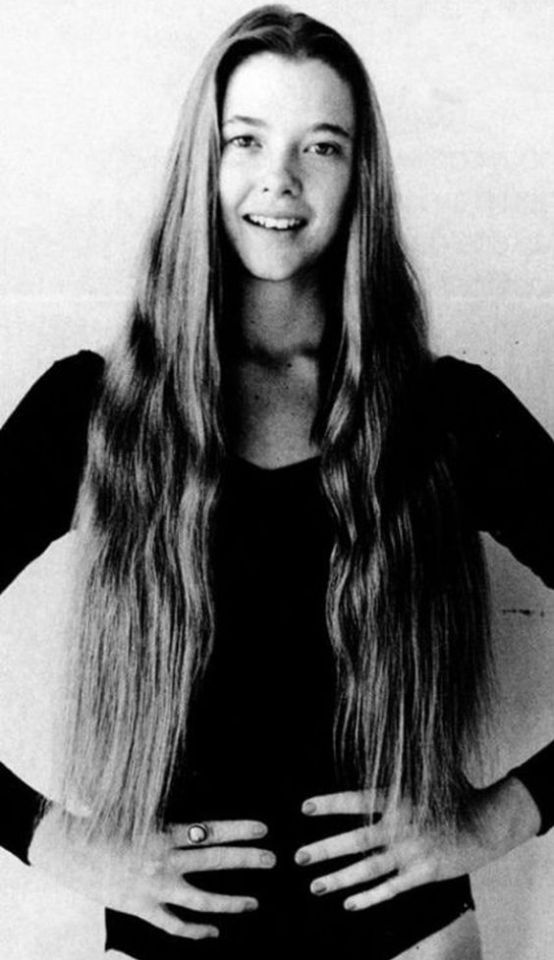
Lily Gladstone (Killers of the Flower Moon)
Sandra Hüller (Anatomy of a Fall)
Carey Mulligan (Maestro)
Emma Stone (Poor Things)

*Minus Sandra Hüller this is pretty much how I viewed how this category would shape up. Very funny to me that when POOR THINGS started screenings critics swore up and down it was an embarrassment to Emma Stone's talent and she would get nothing.
Best Actor in a Supporting Role
Sterling K. Brown (American Fiction)
Robert De Niro (Killers of the Flower Moon)
Robert Downey Jr. (Oppenheimer)
Ryan Gosling (Barbie)
Mark Ruffalo (Poor Things)
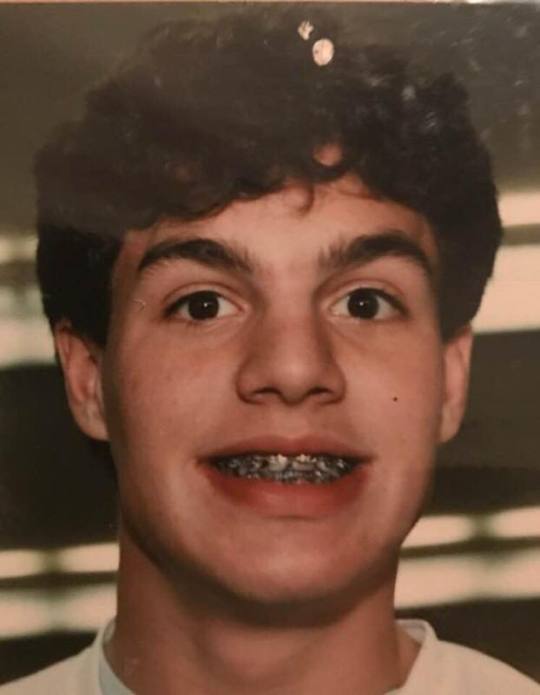


*I honestly felt that Sterling K. Brown could be the upset and I was so happy to be right. His performance in AMERICAN FICTION is a breath of fresh air. I honestly wanted more of his character.
What I like about his Mark Ruffalo's nominations are that they both didn't think these roles would lead to this.
Brown said his publicist kept pushing him for interviews and panels this season and he couldn't understand why as he thought it was such a small role and he was just satisfied with being in the film, but his publicist saw the reactions to Brown's character and knew it was awards worthy.
Ruffalo said he didn't think he could do his POOR THINGS role because he's been so pigeon-holed and was accustomed to playing roles that were the anti-thesis of Duncan that he wasn't sure he could find him. Having people trust in you when even you yourself don't have that trust, or trying even while in doubt of yourself is beautiful.
Best Actress in a Supporting Role
Emily Blunt (Oppenheimer)
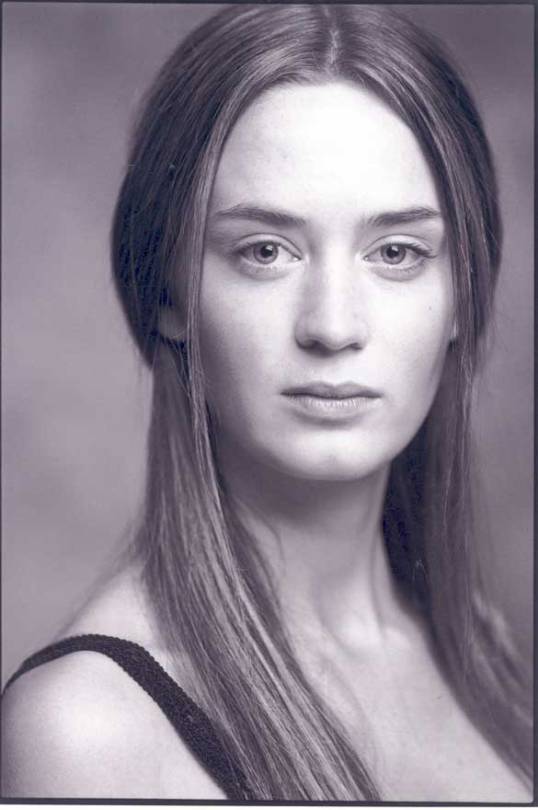
Danielle Brooks (The Color Purple)

America Ferrera (Barbie)
Jodie Foster (Nyad)
Da’Vine Joy Randolph (The Holdovers)

*America Ferrera should be nowhere in this category. It should be Rosamund Pike 1000%. So happy that Danielle Brooks and Da'Vine Joy Randolph were both nominated as I was afraid the voters would only pick one over the other. Kinda surprised by Jodie Foster, but hers was a nomination I was really hoping for.
Best Writing (Adapted Screenplay)
American Fiction
Barbie
Oppenheimer
Poor Things
The Zone of Interest
Best Writing (Original Screenplay)
Anatomy of a Fall
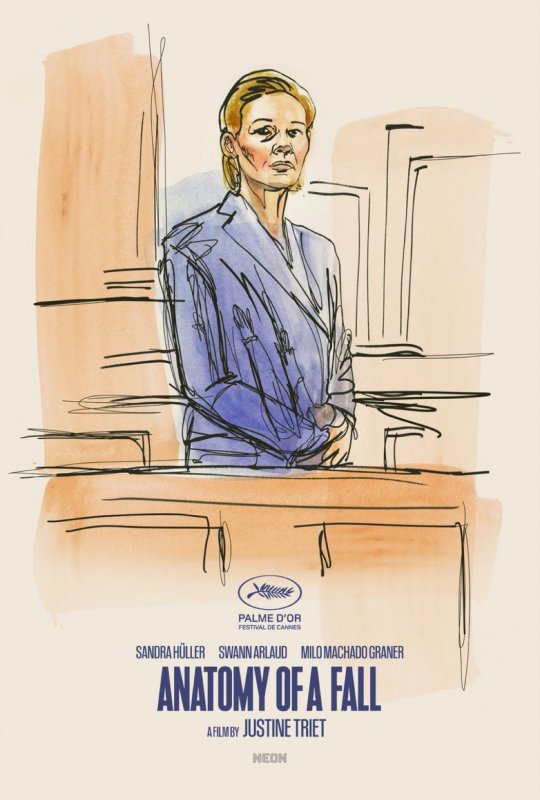
The Holdovers
May December
Past Lives
Maestro
Best Animated Feature
The Boy and the Heron
Elemental
Nimona
Robot Dreams
Spider-Man: Across the Spider-Verse
Best Documentary Feature Film
Bobi Wine: The People’s President
The Eternal Memory
Four Daughters
20 Days in Mariupol
To Kill a Tiger
*I forget the film but last year Dev Patel threw his support behind an International Documentary. He wasn't involved in it, but he did Zoom Q&As promoting it. This year he backed TO KILL A TIGER, going further this time to become an executive producer on it. This is the way to use your profile - uplifting other artists whose projects don't have the reach.


Best Cinematography
Killers of the Flower Moon
Maestro
Oppenheimer
Poor Things
El Conde
*Would much rather SALTBURN be in this category, but very happy for EL CONDE to be recognized.
Best Costume Design
Barbie
Killers of the Flower Moon
Napoleon
Oppenheimer
Poor Things
Best Makeup and Hairstyling
Golda
Oppenheimer
Poor Things
Society of the Snow
Maestro
*Gotta go to makeup maestro Kazu Hiro.
Best Animated Short Film
Letter to a Pig
Ninety-Five Senses
Our Uniform
Pachyderme
War Is Over! Inspired by the Music of John & Yoko
Best Live-Action Short Film
The After
Invincible
Knight of Fortune
Red, White and Blue
The Wonderful Story of Henry Sugar

*I'm 100% behind THE WONDERFUL STORY OF HENRY SUGAR, though I preferred the short within the quandrant of films THE SWAN starring Rupert Friend. As long as the shallow Pedro Almodóvar short STRANGE WAY OF LIFE wasn't nominated, I'm good.
Best Original Song
“The Fire Inside” (Flamin’ Hot)
“I’m Just Ken” (Barbie)
“It Never Went Away” (American Symphony)
“Wahzhazhe (A Song For My People)” (Killers of the Flower Moon)
“What Was I Made For?” (Barbie)
*Was really rooting for one John Carney's two songs from FLORA & SON to get a nod. He's been twice nominated (winning one) for Best Song, but since not gaining a nod for SING STREET (a robbery!), he just haven't been able to gain ground.
Best Original Score
American Fiction
Indiana Jones and the Dial of Destiny
Killers of the Flower Moon
Oppenheimer
Poor Things
*Should have been a space for Anthony Willis who did the score for SALTBURN but everyone has to kiss John Williams' ring and Robbie Robertson passed away so they have to recognize him. Though, if pushed came to shove, I preferred Robertson's score over Williams'.
Best Documentary Short Film
The ABCs of Book Banning
The Barber of Little Rock
Island in Between
The Last Repair Shop
Nǎi Nai & Wài Pó
Best International Feature Film
Io Capitano (Italy)
Perfect Days (Japan)
Society of the Snow (Spain)

The Teacher’s Lounge (Germany)
The Zone of Interest (United Kingdom)
*Haven't been able to see THE ZONE OF INTEREST because A24 kept bollocksing up their screenings (same with THE IRON CLAW), but I hear it's great. I'm 1000% behind SOCIETY OF THE SNOW. I really hoped that JA Bayona was able to break out and make it into the Best Director category, but sadly, it didn't happen,
Best Production Design
Barbie
Killers of the Flower Moon
Napoleon
Oppenheimer
Poor Things
Best Film Editing
Anatomy of a Fall
The Holdovers
Killers of the Flower Moon
Oppenheimer
Poor Things
*Again, another category SALTBURN should have been nominated in.
Best Production Design
Barbie
Killers of the Flower Moon
Napoleon
Oppenheimer
Poor Things
Best Sound
The Creator
Maestro
Mission: Impossible – Dead Reckoning Part One
Oppenheimer
The Zone of Interest
Best Visual Effects
The Creator
Godzilla: Minus One
Guardians of the Galaxy Vol. 3
Mission: Impossible — Dead Reckoning, Part One
Napoleon
#oscars#academy awards#saltburn#barry keoghan#dev patel#anatomy of a fall#emma stone#poor things#mark ruffalo#sterling k. brown#danielle brooks#colman domingo#davine joy randolph#paul giamatti#the holdovers#robert downey jr#cillian murphy#oppenheimer#nyad#annette bening#actors#society of the snow#jeffrey wright#american fiction#barbie#ryan gosling#killers of the flower moon#robert deniro#rustin#the color purple
8 notes
·
View notes
Text
''Does the world need another cinematic representation of the Ripley story?' That is the question I asked myself when the teaser, and then trailer, of the new Netflix series dropped a few months ago.
I answered the question myself: 'Yes, of course, we can definitely do with more Ripley on the screen, even when I know the story so well.'
I have been a fan of the films based on the character Tom Ripley, a conniving imposter, an insecure man and yet utterly charming, created by Patricia Highsmith in her five Ripley books also referred to as Ripliad, starting with The Talented Mr Ripley (1955), the source for the 1960 French film Purple Noon directed by Rene Clement (the restored version of the film was re-introduced to the world in 1996 by Martin Scorsese). The same book was also adapted by Anthony Minghella for his 1999 film, also called The Talented Mr Ripley.
The new Netflix series, written and directed by Steven Zaillian (Oscar winner for Schindler's List), is based on Highsmith's first book.
While I will admit I have not read Highsmith's books (her 1950 novel Strangers on a Train was adapted for the screen by Alfred Hitchcock), I have been engaged with the Ripley films for some time, including Ripley's Game (2002) starring John Malkovich. No spoiler here, but Malkovich makes a surprise appearance in Zaillian's Ripley.
There is also a Wim Wenders' take on Ripley's Game called The American Friend (1977), which is on my watch list. In last year's Saltburn, Barry Keoghan plays a Ripley-like character. Emerald Fennell's film is clearly inspired by the Ripley story, but it also takes many departures from Highsmith's narrative.
So I really waited for the Netflix show.
There were many reasons why I was looking forward it, one of which was that it stars Andrew Scott -- the 'hot priest' from Fleabag, who recently shattered our hearts into small pieces with his tragic performance in All of Us Strangers (a film criminally ignored by Oscar voters).
Zaillian's eight-part slow-burning, moody and at times riveting show, with stunning black and white cinematography stands on its own. But I could not help that the other versions of the Ripley story played in my mind at the same time.
In a 1971 short French documentary, Highsmith talked about seeing a man walk on the beach in Positano, Italy. The documentary is available on the Criterion Channel.
It was in the early 1950s, 6 am.
The man looked upset.
From that image of the man who Highsmith did not speak to, she created Ripley, her most famous fictional character who impersonates his friend, is an expert at forgery and even kills to survive in the world of the rich and the famous, where he is an outsider. In the same interview, Highsmith said she did not think Ripley was very likable.
But the Ripley in Zaillian's show, as well as in Purple Noon (a very handsome Alain Delon) and The Talented Mr Ripley (an equally handsome Matt Damon) are all very likable. That is why we care so much for the character. We want Ripley to survive even when he leaves a trail of crimes -- horrific murders and forged bank checks.
A part of it has to do with Ripley's insecurities and how he is taunted by his friend -- Richard Greenleaf, better known as Dickey, played by a charismatic Johnny Flynn in the current show. Flynn is good, but possibly overshadowed by Jude Law, who played a very sexually charged Greenleaf in Minghella's film, which also had the most gay subtext among all the representations of the story.
Ripley was sent to Italy to track Greenleaf by his wealthy shipbuilding father, played in the show, by a subdued, yet tough Kenneth Lonergan, better known as a playwright and director of films such as Manchester By The Sea.
Greenleaf Senior funded Ripley's trip to Italy. But when his son shows no signs of returning to the US, he decides to cut the flow of money and cancel the large sum he had promised Ripley upon completion of the job.
That is when Ripley's life, his plans and dreams start to fall apart.
In order to pick up the pieces and stand back on his feet, Ripley starts to commit crimes: Some that take place in the heat of passion, while others are meticulously planned and executed.
We watch Andrew Scott's Ripley struggle through the mess he has created, at times finding it hard to keep it straight in his head if he is Ripley or Greenleaf, while the police are trying to track the two down and solve the complex twists in the narrative.
He jumps hotels and moves from one Italian city to another.
The show at times becomes a tourism piece for Italy where the camera lovingly strolls along the beaches, streets, old historic parts and steps of several Italian cities including Rome, Naples, Palermo, Atrani, San Remo, even Venice.
The show takes its own pace to pick up, but then when you least expect, it grabs you by the throat.
There are some delightfully dark and creepy moments. An entire episode set in Rome is dedicated to Ripley trying to dispose of a body, as he drags it down a staircase (the elevator in the building keeps breaking down) leaving a trail of blood, that looks rather gooey in dark shades of black.
We also find a lot of beauty in Zaillian's show, especially in the performances of two of the principal cast members. Dakota Fanning plays Marge Sherwood, Dickie Greenleaf's love interest who quietly suffers as Ripley gets close to her boyfriend.
Zaillian made a very unique casting choice by casting Eliot Sumner (Sting and Trudie Styler's non-binary child) to play Dickie's wealthy friend Freddie Miles. Eliot has soft, gentle features which makes his Freddie quite menacing.
In Minghella's film, Philip Seymour Hoffman was cast as Freddie and he used his deep voice and physicality to scare Ripley, and make him nervous.
But the real star of the Netflix series is its stark black and white cinematography -- the work of master cameraman Robert Elswit (Oscar winner for There Will Be Blood).
Every shot, every frame is precious.
It is film noir at its best but inspired by classic films such as Citizen Kane (1941) and The Third Man (1949).
I wish I could have spent time taking screen shots of many of the scenes on my laptop but Netflix's copyright laws do not allow that. If a coffee table book is produced of the images from the show, I will be first in the line to buy it.
Ripley streams on Netflix.
Ripley Review Rediff Rating: ****'
#Ripley#Netflix#Eliot Sumner#Freddie Miles#Steven Zaillian#Philip Seymour Hoffman#Patricia Highsmith#The Talented Mr Ripley#Anthony Minghella#Andrew Scott#Hot Priest#Fleabag#All of Us Strangers#Matt Damon#Jude Law#Johnny Flynn#Dickie Greenleaf#Marge Sherwood#Dakota Fanning#Rome#Naples#Venice#Palermo#Atrani#Kenneth Lonergan#Robert Elswit
3 notes
·
View notes
Photo


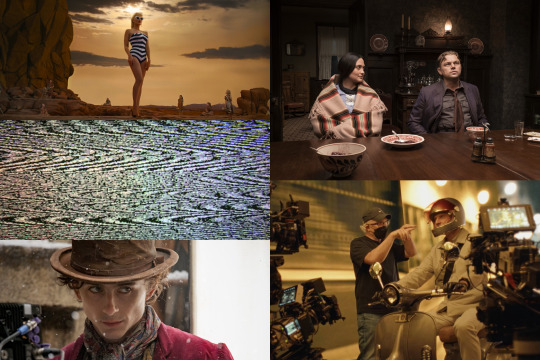
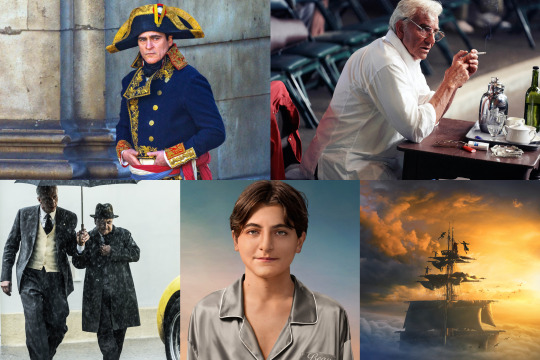

My 25 Most Anticipated Films of 2023!!
No intro this year. Just, y’know, here they are...
PHOTO ONE:
1. Infinity Pool (Brandon Cronenberg) – 1.27.23
Haaaave you seen Possessor?!? Plus, that trailer!!
2. Ant-Man and the Wasp: Quantumania (Peyton Reed) – 2.17.23
Bring on Kang...
3. John Wick: Chapter 4 (Chad Stahelski) – 3.24.23
I’ll never not be excited to see Keanu kill the shit out of people.
4. Renfield (Chris McKay) – 4.14.23
Nic Cage as Dracula... I repeat, Nic Cage as Dracula!!
5. Guardians of the Galaxy Vol. 3 (James Gunn) – 5.5.23
The trailer alone has me more emotionally invested than anything I saw in 2022, period.
PHOTO TWO:
6. Spider-Man: Across the Spider-Verse (Dos Santos, Powers & Thompson) – 6.2.23
Haaaaaave you seen the first one?!?
7. Asteroid City (Wes Anderson) – 6.23.23
Wes is one of my very favorite directors. Enough Said.
8. Indiana Jones and the Dial of Destiny (James Mangold) – 6.30.23
If you’re actually questioning why this is here, you clearly did not know how obsessed I was with Temple of Doom and Last Crusade as a little kid.
9. Mission: Impossible – Dead Reckoning – Part One (Christopher McQuarrie) – 7.14.23
Cruise can do no wrong... until he does... but even then the footage of his death will be a fucking blockbuster, and all his fans will give him the exact sendoff he’s apparently begging for. Can’t wait to see how he almost dies, this time.
10. Oppenheimer (Christopher Nolan) – 7.21.23
So very excited to see Nolan take on something more dramatic... plus, look at that cast!!!
PHOTO THREE:
11. Barbie (Greta Gerwig) – 7.21.23
Margot and Greta... enough said. Oh, but I’ll say more... we live in a world that will soon be home to a Barbie movie co-written by Noah Baumbach!! That’s beautiful.
12. Dune: Part Two (Denis Villeneuve) – 11.3.23
The first felt too unfinished to not be excited to see where Villeneuve brings it next.
13. Wonka (Paul King) – 12.15.23
Really couldn’t care less about Chalamet, and this project is totally unnecessary. But... I’m a die-hard Roald Dahl fan, and this is directed by the man who gave us Paddington 2, so... yeah.
14. Killers of the Flower Moon (Martin Scorsese) – TBD
C’mon... It’s Scorsese!
15. The Killer (David Fincher) – TBD
C’mon... It’s Fincher!
PHOTO FOUR:
16. Napoleon (Ridley Scott) – TBD
I love Ridley Scott... and Joaquin Phoenix looks like he’s going to murder this role.
17. Maestro (Bradley Cooper) – TBD
The theatre geek living deep down within me is enough reason. But then I also want to see if A Star Is Born was a fluke.
18. Ferrari (Michael Mann) – TBD
Michael Mann directing a movie about Enzo Ferrari starring Adam Driver... why aren’t you excited about it?!?
19. Beau Is Afraid (Ari Aster) – TBD
No clue what we’re in for... but I’m certain it’s going to fuck me up for a week or two.
20. Peter Pan & Wendy (David Lowery) – TBD
David Lowery... enough said. I mean, seriously, have you seen A Ghost Story or Pete’s Dragon?!?
PHOTO FIVE:
21. Lee (Ellen Kuras) – TBD
If Kate Winslet wasn’t enough... well, it is... it really is.
22. Blitz (Steve McQueen) – TBD
It’s McQueen doing a WWII drama starring Saoirse Ronan...
23. Megalopolis (Francis Ford Coppola) – TBD
I’m hoping it’s as wild as those set photos have been...
24. The Way of the Wind (Terrence Malick) – TBD
Malick does Jesus...
25. The Wonderful Story of Henry Sugar (Wes Anderson) – TBD
I doubt this is actually going to release in 2023, but it is already in post, so in case does, I really need you all to know just how excited I will always be for new Wes Anderson.
There they are!
As for My Best of 2022, once again all of the major lists will not be getting posted until mid/late January, but I’m going to try to get some of the early lists – such as Posters, TV & Non-2022 Films – sorted and posted over the next week or two. Please Feel Free to Follow Along So You Don’t Miss Anything!
Stay Tuned!
-Timothy Patrick Boyer.
#movies#most anticipated#cinema#barbie#oppenheimer#2023#Christopher Nolan#killers of the flower moon#Martin Scorsese#asteroid city#wes anderson#beau is afraid#film
43 notes
·
View notes
Text
There's No Such Thing as a Free Lunch (But Sometimes It's My Treat)
Summary: It was clearly labeled as his, and it probably wasn't poison. …Eh, Martin had better things to do than worry about the provenance of free food.
Someone has started leaving packed lunches for Martin, and he's not sure who or why. The food is certainly good, though. Five times the mysterious lunches appear, and one time he actually talks to his benefactor. (Lethal Weapon (2016), AO3 link for fic)
1. Monday
When the first brown paper bag appeared on Martin's desk, he was a little puzzled. Still, they'd been running flat-out on this case since 9 am, so unless it was literally a bomb or a severed hand or something, he really did not have the energy to care.
It was a sandwich.
Two sandwiches, actually, and a little bag of dried apricots.
He stared blankly at the ziploc bag in his hand for a long moment. He picked up the paper bag again to check for any indication of who it belonged to: “Martin.”
…The bag definitely hadn't been there when he stopped at his desk this morning, so it wasn't that he'd dissociated so hard over the weekend that he'd grocery shopped and packed a lunch without remembering. Besides, that wasn't his handwriting.
“Finally decided to upgrade from vending machine fare?” Cahill's voice sounded amused, but she wore a decidedly pleased smile. Hmm. She was surprised, so this wasn't some weirdly direct new therapy strategy, then. She didn't need to know he had no idea what was going on.
He considered the sandwich again as Cahill walked on.
It was clearly labeled as his, and it probably wasn't poison. …Eh, he had better things to do than worry about the provenance of free food.
The sandwiches were peanut butter and jelly, and Martin did not die.
2. Tuesday
Another bag was sitting on his desk when he arrived the next morning.
It contained almonds, grapes, a container of cheese, pepperoni, and crackers, and a brownie.
Martin glanced around the room, but no one seemed to be paying any attention. His name was clearly written on this one, too.
He ate the brownie and saved the rest for lunch.
3. Wednesday
He was vaguely disappointed when there was no bag on his desk the next morning.
Tracking down leads for the latest case took the entire morning and more. By the time they made it back to the station, it was almost 2 pm, and Roger had been moaning about how hungry he was for over an hour.
There was still no bag on his desk.
He wasn't really even sure why he was so disappointed. The lunch-bag fairy was apparently a two-day only deal, but that was better than he had any reason to expect.
He grabbed a few items from the vending machine, as per usual, and tried to forget about yesterday's brownie.
…
The station was nearly deserted when he ducked into the breakroom one last time before leaving, but Martin wasn't quite the last hold-out plugging away at the case—Scorsese was sitting at the table, his head propped on one hand and an energy-drink can in the other, looking like a zombie.
He frowned blearily as Martin plugged his coins into the vending machine and tried to decide between cheese puffs and M&Ms. Or both. This was his dinner, after all.
“…Did you forget you left your lunch in the fridge?”
Martin's nearly-made decision evaporated from his brain. “Huh?”
“Your lunch,” said Scorsese. “It's still in the fridge.”
The fact that Martin hadn't brought a lunch was on the tip of his tongue, but…
He opened the fridge. Sure enough, a brown bag labeled “Martin” sat on the middle shelf. A peek inside revealed another two sandwiches and bag of carrot sticks.
“Thanks for reminding me.”
“No problem,” said Scorsese. He chugged the remainder of his energy drink.
Martin headed towards the door.
“Your money's still in the vending machine,” noted Scorsese.
Martin flashed him a crooked smile. “Right.” He punched the buttons for the M&Ms, and snagged them out of the dispenser. “Guess I'd better get out of here before I forget where I left my head.”
Scorsese snorted. “Yeah. Me, too.”
4. Thursday
There was, again, no bag on Martin's desk the next morning, but there was one in the fridge.
He delved into it eagerly while waiting for the coffee to finish brewing.
Turkey sandwiches today, with tomato, avocado, and plenty of mustard. More carrot sticks, and a lemon bar.
The case sucked, but a bad day with a lemon bar was certainly an improvement over a bad day without one.
5. Friday
The bag was on his desk again, and the first thing he pulled out was a thermos.
Martin pondered it with some concern. All of the wrappings previously had been disposable.
He supposed if the lunch-bag fairy was able to access his desk to leave lunches, they must also be able to get in and retrieve stuff (which, in hindsight, he probably should have reported to Avery by now), but… was he intended to wash it? And when did they come? It was almost the weekend.
He set the thermos down and continued his exploration. Crackers, some cherry tomatoes, another lemon bar, and a note.
“Since my husband is clearly not going to remember to ask you: Please come join me for coffee [a note scribbled in the margin added 'and coffee cake'] tomorrow (Saturday) morning. Recently got a 'Texas chili' recipe that I'd like to pick your brain about. Anytime after 9am is fine. –Trish (P.S. Bring the thermos with you.)”
+1 Saturday
Martin sheepishly knocked on the Murtaughs' door at 9 am, thermos in hand. Trish welcomed him in with a smile, reclaiming the thermos and pointing him to a seat. Roger and the teens were out for the day, she explained.
It took Martin no more than halfway through his first, generous slice of rich cinnamon coffee cake to dissect all the ways in which the purported “Texas” chili recipe was anything but. (“Barely even qualifies as 'chili,'” he grumbled, eliciting a snort of laughter from Trish.)
It took a few more bites to finally dredge up the will to broach the other topic on his mind. His eyes stayed on the surface of the coffee in his mug, as if it were likely to do something dangerous if left unsupervised. “So you're the one who's been leaving lunch for me all week?”
There was a pause.
“Well, I sent it in with Roger. …What did he say when he gave it to you?”
Martin hesitated.
“Martin.” Trish's face brooked no argument.
“Well… he didn't exactly say anything. I just found it on my desk. Or in the fridge.”
Trish dropped her face into her hand. “I swear I am going to kill that man someday.” She pointed a finger at Martin. “That is a figure of speech, and not an admission of guilt.”
By the time Martin left in mid-afternoon, he'd been drafted as a prep cook to assist with multiple batches of meals to stock the freezer, fueled by helping to polish off several of the remaining lemon bars.
He also had another coffee date with Trish scheduled for the next week.
As price for a week's worth of lunches went, he was definitely coming out ahead.
#martin riggs#trish murtaugh#lethal weapon (2016)#because martin riggs desperately needs to eat better.#onyxbird fanfic
31 notes
·
View notes
Text
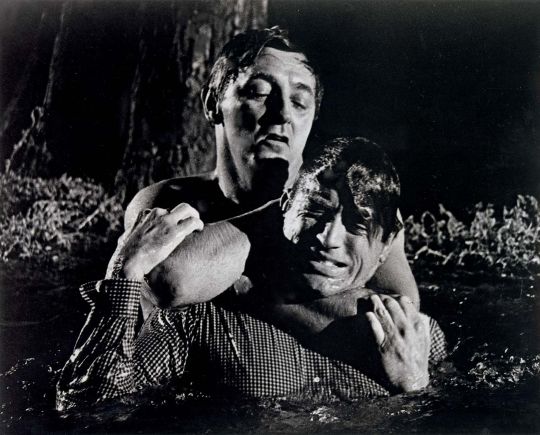
Robert Mitchum and Gregory Peck in Cape Fear (J. Lee Thompson, 1962)
Cast: Gregory Peck, Robert Mitchum, Polly Bergen, Lori Martin, Martin Balsam, Jack Kruschen, Telly Savalas, Barrie Chase. Screenplay: James R. Webb, based on a novel by John D. MacDonald. Cinematography: Sam Leavit. Art direction: Robert F. Boyle, Alexander Golitzen. Film editing: George Tomasini. Music: Bernard Herrmann.
When I watched Martin Scorsese's 1991 remake of Cape Fear, I hadn't seen J. Lee Thompson's 1962 version. Now that I've seen it, I don't know why Scorsese wanted to remake it. The earlier version, with a screenplay by James R. Webb from the same John D. MacDonald novel, The Executioners, is a tense, well-cast movie with a Bernard Herrmann score that Scorsese had Elmer Bernstein adapt for his version. What Scorsese's screenwriter, Wesley Strick, did was to add more complications to the characters in the later film. Gregory Peck's Sam Bowden is a straight arrow compared to Nick Nolte's, and both Jessica Lange and Juliette Lange bring greater depth to Bowden's wife and daughter than Polly Bergen and Lori Martin do in the earlier version. But given that the movie in both cases is essentially a suspense thriller, I'm not sure that this is necessarily an improvement: The earlier film's emphasis on the innocence of the Bowdens makes the threat posed by Robert Mitchum's Max Cady more intense than that posed by Robert De Niro to the more morally compromised Bowdens of the Scorsese film. So in short, I have to say I prefer the earlier version. No one is saying that Lee Thompson was a better director, or that the screenwriter and actors in his version are superior to Scorsese and company. But if the intent of the film is to shock and to have the audience on the edge of their seats, then the earlier version does the job better. I have never been a fan of Gregory Peck, who is an actor who never surprises me with a line delivery or facial expression, as Nolte has been known to do, and Bergen and Martin are decidedly inferior to Lange and Lewis as actors, but they make better victims, which is all that the movie asks of them. The one performance that seems to me superior is Mitchum's, perhaps because there is a brutishness in his very persona that is lacking in De Niro, who has many film personae. I think De Niro overacts feverishly to make his Cady menacing, at the expense of becoming ludicrous. Mitchum, on the other hand, has only to narrow his sleepy eyes to suggest the deep psychosis of his character, and his menacing of Bergen, in which Mitchum apparently improvised the device of breaking an egg and smearing her with it, is truly chilling. Although Lee Thompson's final sequence, in which Cady sneaks up on the Bowdens' houseboat, is somewhat botched -- we're never quite sure where Cady, Bowden, and the detective assigned to guard them are at any given moment -- I still think it's preferable to the special-effects-laden storm that destroys the houseboat in Scorsese's film. Lee Thompson, whose only other really memorable film was The Guns of Navarone (1961), was never the filmmaker that Scorsese is, but here I think he does a better job of keeping the audience on edge.
4 notes
·
View notes
Text
So I used my time machine (which is canon to my blog but which can only be used for shitposting; there are reasons, don't worry about it) and I went ahead in time three years to see what was up with the Goncharov "remake," aka Goncharov (2025), aka the Meme that Became a Real Movie.
Well, things started out promising even though Martin Scorsese simply would not bend to pressure and direct the Meme Movie, but when the Safdie Brothers DID sign on, it was with Scorsese's blessing. The script appeared to bounce around through most of 2023, there were three different writers attached in the span of five months, including Ronald Bronstein, Steven Zaillian, and most exciting at one point, Gillian Flynn. Most industry people really expected it to eventually fall to Zaillian, and that all of the hot potato was simply premature reporting. Put a pin in that.
This was around the time (July 2023) that Tumblr launched the ill-fated (to put it mildly) crowdfunding campaign so that user @tuvuofa, maintainer of the Goncharov fan wiki, could drop out of college to finish their screenplay, and move to Hollywood just to pitch it. @tuvuofa stole $21,000 of donations before deactivating their blog, deleting the wiki, and disappearing. A few blogs have since claimed to be the vanished scammer, offering hivliving-ian tall tales to explain the events. None have truly passed the sniff test.
September 2023, the film was officially announced to have its stars, and this is where the trouble started. Robert Pattinson as Goncharov made sense, was a Safdie mainstay, and most were excited about this casting. There were exceptions. Case in point:

So we had Pattinson as Goncharov, Florence Pugh as Katya - fine (the age gap discourse was heavy but brief), Avan Jogia as Andrei (we'll get back to that one), Jake Gyllenhaal as Ice Pick Joe, Nina Dobrev as Sofia, and Taylor Zakhar Perez as Sascha.
Altogether, not bad. The cast was, for the most part, young, and a lot of them had proven acting chops. Even before principal filming started Goncharov (2025) was being hailed as the next "it" movie.
Then, the trouble began. Robert Pattinson elected to drop out, the provided reason being Batman filming obligations even though the new Batman was already in the can by February 2024. This was bad sign number one. We all wondered "who's gonna play Goncharov now??" and at the same time we all were thinking "please not Harry Styles"
Well, the monkey’s paw being what it is, it wasn't Harry Styles, but it WAS Timothee Chalamet.
Then, the script drama. After Chalamet joined the film, we started to hear about rewrites. Nothing really added up, but we went along with it. Two weeks into principal shooting, the story breaks that the script still isn't even COMPLETE, and that studio meddling has been turning the movie into less of a tense, emotional crime drama with fleshed out characters and implied complex relationships, and more into a CW-esque melodramatic romance that just so happens to be set in the world of organized crime. In Naples.
So as soon as this story drops, Robert Pattinson metaphorically jumps the fence of his enclosure and admits he was 100% lying about leaving due to Batman obligations, trashes the script as it was when he last saw it, and blows the whistle on the biggest bombshell to date: the Safdies aren't even attached anymore.
Look, I'll make a long story short since the Time Cops are probably going to come in here blasting at any moment. Here’s the future of Goncharov (2025): the movie debuts to what can best be described as critical bemusement. Returns are paltry given the hype. Avan Jogia delivers the performance of his life, and his career enters its own Pattinson Arc of Respectable Unhinged Roles. Still, everyone agrees that he seems to be acting in a Completely Different, better film. The way he punches the wall during the Train Scene becomes a meme unto itself, as everyone is convinced he was channeling real anger in that moment at how wooden Chalamet's performance was.
Time machine didn't have the juice to pop over to 2026, but last I heard a major campaign is underway, similar to #ReleasetheSnyderCut, to fund the Safdie helmed, Zaillian written, Pattinson starring version of Goncharov.
Discourse is split between the camp that's pissed off because the IP is now owned by Legendary Pictures, so it won't "really" be Goncharov, and the camp that's thinking "finally the characters can be Neapolitan and things will make sense" because they didn't even read the synopsis of the movie. It's about the Russian mafia IN Naples, idiot.
14 notes
·
View notes
Text
Saw Goncharov finally... sort of
So. I’ve finally seen Goncharov (1973). And I read the Wikipedia article because I had questions. And then Wikipedia couldn’t answer all of my questions.
The movie I saw shared many of the qualities of the Goncharov I’ve seen people talking about, but there were scenes I never saw. And no one talks about the silent shootout sequence where the only audio is the sound of clockwork. (Which really got me in the moment but almost seems ham-fisted given the restraint elsewhere in the production.)
So I started digging, and I don’t think I’ve seen anyone talk about just how many cuts of this film exist. You probably know the main beats of the story.
Scorsese meets Matteo through a family friend. They hit it off, become fast friends, fast forward a couple of years, and Martin is going around Hollywood knocking on doors trying to get his friend’s most ambitious script brought to life.
Lucille Ball, of all people, agrees to help Scorsese come up with the money but the day-to-day production falls to him. (Desilu is long in the rearview mirror at this point, and for reasons she’d never come right out and say, Lucy didn’t want her name on the picture.)
Also, contrary to popular belief, Lucy DID talk about her involvement once. Just a few sentences in her 1974 interview with Dick Cavett.
----
Cavett: What about Goncharov? What made you do it?
Ball: Well, Marty was so passionate about it. He believed in it, and I couldn’t help but believe in him. That’s really all there was to it.
Cavett: But it was sort of a flop wasn’t it?
Ball: You know, I really think it was a sort-sort of a film ahead of its time. And that’s all I’ll say about it. I’m proud of it for my little part in making it happen and that’s it.
----
But I digress. So Lucy gives Scorsese the reigns on the project, but he’s trying to get Boxcar Bertha and Mean Streets made during the long, troubled production in Europe. Matteo is doing a ton of the heavy lifting, and he and Scorsese are butting heads. They're both trying to direct when they can be on set together, and it's giving everyone headaches.
Finally, the film debuts at Cannes in ’73. That’s where things start getting really messy. We have the original cuts: the English cut that debuted at Cannes and the nearly identical “Italian” cut for the theatrical premiere in Rome.
And then you probably know about the changes Warner Bros. demanded for the American release. Scorsese regrets those changes, and that is probably why the movie bombed in the States. But he was trying to get Mean Streets made and compromising on the American release made that happen.
That's all on Wikipedia as is the TCM/Criterion cut from 2011 that tries to replicate the Cannes cut.
And then you also probably know about the hour long, really bad TV cut that aired a few times in the ‘80s and ‘90s. The less said about it the better.
You might not know about Matteo’s director’s cut that had a short theatrical rerelease in Italy in the late ‘80s. This is where Domenico Procacci comes in. Procacci was 13 when the original release happened, but he was a passionate advocate for Matteo’s cut and helped get it into theaters. Then in the ‘90s, he worked on a restoration of that cut for home release, which is where the poster with his name on it comes from. It was a mock-up never meant to be released to the public.
BUT WAIT, THERE’S MORE. You may have seen the name Ed Prescott mentioned in relation to Goncharov, but the dude is super anonymous. No online presence. But I found a couple of ancient forum posts where someone managed to get his email address in 2003.
Prescott was kind of a jack-of-all-trades in the ‘80s and ‘90s. He worked a bunch of different small jobs in the film industry before becoming an archivist for WB. And he’s the guy that saved most of the film we have from Goncharov. Procacci’s remaster wouldn’t have been possible without him.
According to Ed, the most widely pirated version of Goncharov was close to the Cannes cut but not identical. He also says Scorsese worked on but didn’t complete his own director’s cut. And Ed, a hobbyist editor himself, cut together a “complete cut” that he never showed anyone.
So yeah… I have seen a Goncharov now, but I don’t know if anyone has seen THE Goncharov.
14 notes
·
View notes
Text
Review: After Hours (1985)
After Hours (1985)
Rated R

<Originally posted at https://kevinsreviewcatalogue.blogspot.com/2023/06/review-after-hours-1985.html>
Score: 4 out of 5
After Hours is not the movie I was expecting. Between its director, its cast, its '80s New York setting, and the fact that Popcorn Frights screened it a couple of weeks ago, I expected a dark, downbeat noir thriller with horror touches, and perhaps one of Martin Scorsese's lesser films given that it came from his period in the '80s when he'd lost the approval of critics and audiences. Instead, I was surprised at just how funny the film was, albeit going in a very different, darker, more Kafkaesque direction with its humor versus what we often associate with the R-rated '80s comedies that it only superficially resembles. It's a film born from a successful filmmaker who was at a low point in his life and career, and damn well knew it, channeling all of his frustration with his struggle to get The Last Temptation of Christ made into a story of a man having the worst night of his life as everything that can go wrong, does go wrong, often in such a manner where you can't help but laugh and cringe at the same time. It's one of the darkest versions of this kind of movie to exist, don't get me wrong, but that movie is a hilarious, surreal, gut-busting comedy that I absolutely enjoyed.
Our protagonist Paul Hackett is a yuppie in Manhattan who inputs data at a firm and longs for more out of life. One night, while at a diner, he meets Marcy Franklin, a beautiful woman who tells him that her roommate Kiki Bridges is a sculptor who makes plaster-of-Paris paperweights, and leaves him her number, ostensibly in case he wants to buy one but really because she's into him. Later that night, Paul obliges and heads down to Marcy and Kiki's apartment in Soho, in what turns out to be the beginning of a series of events involving a dead body, a pair of burglars who for once weren't carrying stolen merchandise, a bartender who's lost the key to his register, a punk nightclub, a vigilante mob, and a whole lot of really weird women.
It's the kind of night that feels absolutely cursed, an experience that most of us can probably relate to even if the threat of death never came up for us the way it has for Paul by the end of this movie, and Paul's actor Griffin Dunne does a great job of selling it. Dunne plays Paul as a man bored with life, the film opening with him doing perhaps the most soul-sucking office job you can imagine. You understand from the moment you see him why he might run off into Soho in the middle of the night, simply on the promise of meeting a beautiful woman. As the film goes on, he grows to regret his decision in increasingly bewildered and desperate fashion as the city tortures him with every indignity it can throw his way and uses him as its own personal chew toy, from little things like losing a $20 bill to some outright wacky stuff, slowly but surely sinking into madness as he goes. Each new scene makes you wonder how the city is going to fuck with him this time, like an old-school point-and-click adventure game that throws all manner of increasingly bizarre obstacles in the way of what should be a simple goal. "If I want the keys to my apartment back, I've gotta go to the bartender's apartment, but there are burglars on the loose and the other people there don't know me, so they think I'm a criminal..." Given the hell he was going through at the time, it was no wonder Scorsese saw something in Joseph Minion's screenplay.
And the movie wouldn't have worked as well as it did if not for how Scorsese once again made New York the other main character. In this case, it's not a bustling metropolis, but a place in the wee hours of the morning (after hours, if you will) where the streets are deserted and the people you do meet are more likely to be the freaks and the weirdos. I can easily picture the version that Tim Burton (the director originally attached to this) might've made, and it probably would've been an inventive film in its own right, but Scorsese fuses that style with his own background as the guy who defined the image of 1970s/'80s New York on the big screen, creating a slightly askew version of his usual "gritty realism" where it feels like anything bad can happen, and not just the things you hear about in the next morning's headlines. It feels like a place that hates Paul and wants to see him suffer for the sake of its own amusement, and Scorsese, filming a New York devoid of traffic, makes the place simply feel wrong, like a maze designed for his torment.
The supporting cast, too, nails it. Being among the few people in the neighborhood who live their lives at night, they're strange even for the standards of New Yorkers, from Linda Fiorentino's kinky artist Kiki to Catherine O'Hara's stuck-in-the-'60s ice cream truck driver Gail to Cheech Marin and Tommy Chong as the small-time crooks Neil and Pepe. Most importantly, however, as Paul interacts with all of them, we get perhaps the most uncanny element of this film's upside-down New York: a place where everybody seems to know each other, like a small town that just so happens to be nestled in the middle of Manhattan. People who don't treat each other as total strangers? Now that's how you know something's wrong in the Big Apple, especially if you're an outsider. It adds to the feeling that Paul's night has gone completely sideways, like something has not only gone totally wrong ever since he stepped out of his apartment into the wild world of New York's nightlife, but has been totally wrong since long before he entered the picture, like he wandered into something that by all logic shouldn't exist in the middle of the City that Never Sleeps but does so anyway. It builds to an ending that arrives suddenly, but feels like the perfect punchline for everything we just witnessed.
The Bottom Line
I was not expecting After Hours to be the movie it was, but I'm glad I got to see it. Martin Scorsese and the cast together do a great job lending a very off-kilter black comedy feel to his usual style, and I had a great time watching it.
#after hours#1985#1985 movies#comedy#comedy movies#thriller#martin scorsese#griffin dunne#rosanna arquette#verna bloom#linda fiorentino#teri garr#john heard#catherine o'hara#cheech marin#tommy chong#cheech and chong
2 notes
·
View notes
Text
Martin Scorsese’s Goncharov (1973) saved my life. I was in a really terrible place when I saw Goncharov for the first time. I had just gone through a terrible tragedy, you see, the cat orphanage I was volunteering at at the time had just burned down and I had been caught in the blaze. At first we thought it was our rival orphanage across the road, Dog Orphanage, and so we sued them for everything they were worth. But it was revealed in the trial that the fire had not been caused by Dog Orphanage but by a lit cigarette I had been smoking near the gas fireplace. I was devastated to find out that I had somehow caused the fire. It weighed on me, I became an alcoholic, I was stumbling around going from orphanage to orphanage burning them down because I had accepted who I thought I was. One evening I just got so tired of it all, I was ready to end it. I was on my way to do so when I came across a movie theater that was showing Goncharov (1973) directed by Martin Scorsese. I thought “What the hell, one last movie before it’s over.” So I bought a ticket, sat down, and as the lights went down I could feel something in me shifting. As I sat there watching what might be Scorsese’s magnum opus tears just started rolling down my face. I saw a little of myself in every character that came onscreen. Then came the scene where Goncharov is talking to a downtrodden Krakov and he tells him “I know what you did. I know what they turned you into. And that isn’t who you are. You’re more than the sum of your past deeds. Ya gotta stop lettin’ it define who you are now, pal. I know who you are. You’re Krakov. So live life like you know who you really are.”
“Thank you.” Krakov says with tears in his eyes.
“Ey, forget about it. I’m Goncharov!”
Tears welled in my eyes in the theater. It was me! He was talking to me! In that moment I finally understood who I was, and I understood the true power of storytelling. So, after I left the theater that night I made a new life for myself. I changed my name because it was associated with the orphanage burning guy, and became Quentin Tarantino. Thank you, Goncharov. You saved my life.
7 notes
·
View notes
Text
Chapman University Masterclass
After returning home from serving in the Vietnam War in 1968, director Oliver Stone found himself unable to deal with reality. He called himself “another person” after his experiences. Out in the field of battle, the wet biome of Vietnam jungles proved too difficult of an environment to pen his thoughts, so he relied on memory in order to process his experiences into a screenplay.
The first draft, titled “Break,” was an abstract impression of the war — the main character dies in the first quarter of the film, travels to the Egyptian underworld and magically ends up in prison. But following 18 years and some major revisions, Stone would turn “Break” into the visceral 1987 Best Picture winner “Platoon” — a tall task by the standards of 1980s cinema.
“There’s been so many war films since 1986. It’s almost like (science fiction) now. It seems relatively easy to make these explosions and have these men running around under fire,” Stone said. “Believe me. Back then, it was really difficult to do this. It was seen as groundbreaking… The Vietnam thing had certainly never sunk into the American public… When they saw this film, I think it really shook them. It wasn’t ‘Apocalypse Now.’ It wasn’t ‘Deer Hunter…’ It was something else — unsettling — and that’s what I’ve been doing since then.”
On Nov. 13, the three-time Academy Award winner joined a Chapman audience in the Folino Theater following a screening of “Platoon.” He was introduced by Stephen Galloway, the dean of Dodge College of Film and Media Arts, as one of the few directors whose personality stamps his work. Throughout their conversation, Stone brought a wealth of filmmaking wisdom, an honest outlook on his past and a cornucopia of blunt assertions regarding media propaganda, foreign politics and American history.
Prior to completing his abstract war screenplay, Stone was arrested in San Diego for smuggling marijuana from Vietnam before being bailed out by a lawyer his father had hired. He made his way back to New York for a proper homecoming but little clarity on his future.
“All I knew how to do was kill people and to camp out in the jungle… I wanted to further my education,” Stone said.
Stone had previously dropped out of Yale before the war, where he was classmates with George W. Bush, or as Stone likes to call him, “the dope who ran this country into the ground.” He would later film “W.” about the 43rd president. With a fresh start, Stone enrolled in New York University where he took an introductory film class from director Martin Scorsese.
Following talking on his writing process, his regrets and an excerpt from his book (Chasing the Light: Writing, Directing, and Surviving Platoon, Midnight Express, Scarface, Salvador, and the Movie Game), Stone acknowledged his reputation amongst viewers and critics who consume the violence in his films.
“That’s what they always say about me, ‘I’m crude, or I’m vulgar and I’m not subtle.’ I think there’s a theater of cruelty. You have to show them. You have to shock them. People get awards for not showing… but sometimes you just gotta show (John) Kennedy’s fucking corpse and what they did to him and the holes they put in him.”
— Oliver Stone, three-time Academy Award-winning director, referring to his film "JFK"
Stone is best known for his films “Platoon,” “JFK,” “Nixon,” “Snowden” and much more.
He also provided advice on how to bring out authentic performances from actors who may not have the same connection to the subject matter as he does — the key being pressure.
“You have to bring pressure on the person who’s not living that life unless he’s totally dedicated to method acting,” Stone said. “You gotta get them to a level where he understands the intensity of that experience… You put the idea in their hearts that they’re going to this place.”
Questions were opened to the audience for a Q&A session, during which Stone spoke on his views of American history. His ideations have manifested into films such as “Nixon,” “World Trade Center,” “Wall Street,” “Born on the Fourth of July” and “Snowden.”
“American history is full of lies… That’s what’s depressing. People forget that they’ve been lied to, and they just move on and they buy the next lie,” Stone said. “We’ve got to change that paradigm. We’ve got to change the way we think and address this government. Governments lie.”
When asked about off-the-record moments from “The Putin Interviews” — a four-part documentary series in which Stone interviews Vladimir Putin — Stone claimed that the Russian president is modest and misunderstood. He said that Americans need to understand that the Russian people also have a love for their country and want sovereignty to control their fate.
“Of those who are interested in knowing who this so-called villain is, it’s important you know who he is and how he thinks and how he behaves…” Stone said. “People in the United States, because they hate him so much from the propaganda, have turned their eyes away. They don’t even want to listen. This is horrible. This is what causes so many problems in the world. We have to listen. We have to empathize… The only way to preserve peace is to understand each other.”
A later question about the documentary “Navalny” — centered on Russian opposition leader Alexei Navalny — prompted Stone to respond, “I know the Navaly story, and I know what propaganda is. He’s an American hero — a Western hero. We’ll leave it at that.”
The evening was capped off with a message from Galloway, who said that no matter whether he agrees or disagrees with Stone’s declarations, he admires his courage for voicing his opinions with the world against him.
Freshman television writing and production major Ross Corman-O’Reilly attended the event because of Stone’s cinematic legacy and his love of the film “JFK.”
“This was the best master class I’ve been to. It was so off the walls. It was great to see Stone. I respect him very much as a filmmaker.”
— Ross Corman-O'Reilly, freshman television writing and production major
Junior film studies major Karthik Davuluri describes the evening as the Master Class he’s been waiting for.
“He’s made some legendary movies. We don’t get a lot of directors who are from that era. He’s a truly unique guest to get, and I was really interested in learning about his perspective on film and politics and how he combines the two… I really thought this was a once-in-a-lifetime thing hearing his perspective on everything. He’s a casual guy who isn’t afraid to say what he thinks and speak his mind even if it is controversial, which is something I’ve been waiting to see from a Master Class.”
-Nicholas de Lucca, "Oliver Stone keeps it candid at masterclass," The Panther, Nov 22 2023
0 notes
Text
FATSO and THE HONEYMOON KILLERS by Susan King
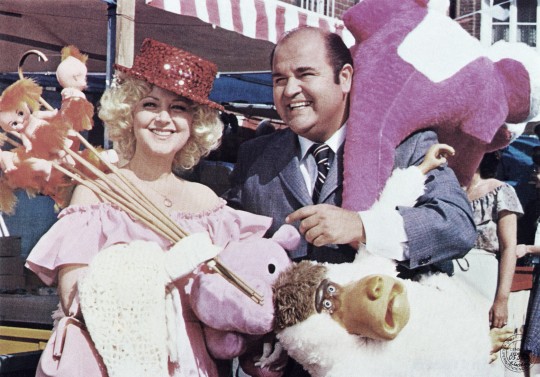
Being overweight is a traumatic experience both physically and emotionally. There’s depression, lack of self-worth, loneliness and the fear that no one will love you because of your size. Even if you lose weight, it’s still hard to believe in yourself due to past limiting beliefs. Over the years, filmmakers have explored this sensitive subject, including John Waters (Hairspray, 2007), Jane Campion (Sweetie, 1989) and P.J. Hogan (Muriel’s Wedding, 1994).
Oscar-winning actress Anne Bancroft came up with the idea for FATSO (1980), her only feature film as a director, at AFI’s Directing Workshop for Women in the mid-1970s, where it was developed as a short film. The first film produced by her husband Mel Brooks’ Brooksfilm, FATSO is a comedy about Dominick DiNapoli (Dom DeLuise), an overweight New York shopkeeper whose late mother always fed him as a child whenever he was upset. Now, his eating is out of control. He still lives at home, and his nagging sister (Bancroft) and her family reside downstairs in a two-family brownstone, while Dominick and his brother, exasperated Frank Jr. (Ron Carey), live upstairs. When their 39-year-old extremely overweight cousin Sal suddenly dies, Bancroft’s Antoinette harps and nags her brother to see a diet doctor. When the diet doesn’t work, she enrolls him in a “Chubby Checkers” support group. It’s only when he meets Lydia (Candice Azzara), a neighboring shopkeeper, that he tries to turn his life around.
Critics basically trounced FATSO when it was released 41 years ago. Roger Ebert actually gave it a one-star rating. Gene Siskel declared it “an emaciated script idea. Two basic dramatic approaches to fatness are to regard it as comic, or tragic. Anne Bancroft has somehow avoided both approaches in FATSO, a movie with the unique distinction of creating in its audiences an almost constant suspense about how they are supposed to be react.”
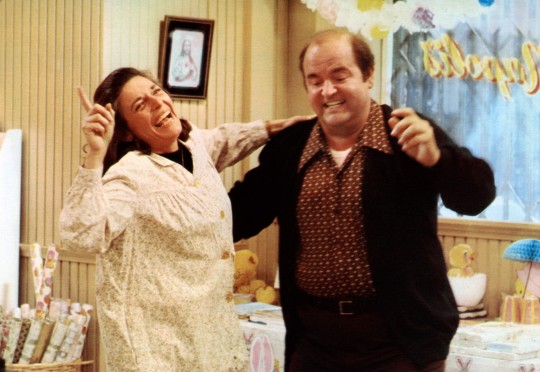
However, the film has grown in reputation over the years and was even included in a retrospective on liberating Hollywood women directors in the 1970s at the UCLA Film & Television Archive in 2019, describing the film as a “hilarious, heartwarming comedy.” That’s a bit of hyperbole. DeLuise, who rarely got a chance to really show his comic brilliance in film and television, is the best thing about FATSO. He’s funny and poignant and has chemistry to spare with Azzara.
And Bancroft does show just how hard it is to lose weight. In one sequence, Dominick convinces his brother to padlock the fridge and the pantry only to threaten him with a knife in the middle of the night to unlock them. Depressed at his behavior, he calls the Chubby Checkers (Richard Karron and Paul Zegler) for help. But when they start talking about food, the trio goes crazy in the kitchen and eats everything in sight.
When he decides to propose to Lydia only to discover she’s not home, Dominick goes crazy and eats $40 worth of Chinese take-out. Just as Siskel noted, Bancroft tries to make these scenes funny but, in fact, they are incredibly sad. Though Bancroft excelled at comedy as an actress and was married to a comic genius, she had problems writing and directing comedy. Though he’s considered fat in the film, DeLuise is just pleasingly plump. He’s nowhere near the 325 pounds he was later in his life. FATSO did change the lives of the two Chubby Checkers played by Karron and Zegler. They both lost a substantial amount of weight over the years.
Just like Bancroft, the shockingly riveting thriller THE HONEYMOON KILLERS (1970) was the sole film written and directed by composer Leonard Kastle. He actually wasn’t the first director on the film; however, Martin Scorsese was given the pink slip after the first week because he was taking too long. Noted as Francois Truffaut’s favorite American film, THE HONEYMOON KILLERS vividly depicts the self-esteem issues many have when being overweight.
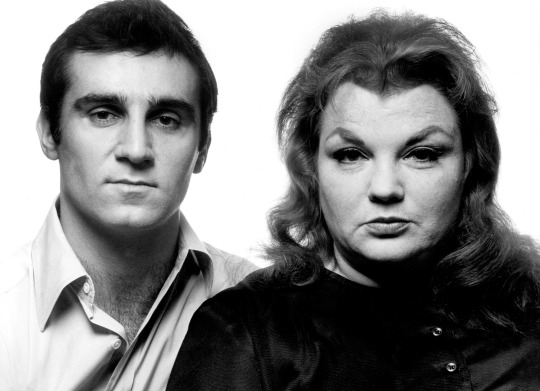
A grim nurse, Martha (Shirley Stoler, the Nazi guard in Seven Beauties, 1975), lives at home with her nagging friend Bunny (Doris Roberts) who keeps telling her to lose weight. The more stressed Martha gets, the more she eats. In fact, eating has almost become sex to her whether she’s devouring chocolates, cookies or even a pretzel. But she desperately wants to fall in love but fears her weight will prevent her from finding a man.
Unbeknown to Martha, Bunny has submitted her name to a “lonely hearts” club and soon she gets a letter from Ray Fernandez (Tony Lo Bianco) from New York City. He soon visits Martha in Alabama where he seduces her and convinces her to give him a loan. After he leaves, Ray writes her a Dear Jane letter. Threatening to commit suicide, Ray allows her to visit him in New York where he reveals he’s a gigolo/con man who seduces and swindles lonely women. Because she is so lovesick and doesn’t want to lose him, she accompanies him on his jobs posing as his “sister.”
THE HONEYMOON KILLERS was inspired by the true story of Raymond Fernandez and Martha Beck, the legendary “lonely hearts killers” of the 1940s, who were executed at Sing Sing in 1951. Even 51 years after its release, THE HONEYMOON KILLERS is very disturbing. Not only are the murders gruesome, but Martha’s mistreatment as a “fat girl” has turned her into a psychopath. She will do anything and everything to keep her man even attempting to drown herself when she hears Ray trying to seduce one of his conquests at the riverbank. In an interview, producer Warren Steibel stated “we wanted to do an honest movie about murders. These are not charming people. They are sleazy people-but fascinating. You won’t come out of the theatre feeling sorry for the killers like in some movies. It is not romanticized.”
While these films aren’t necessarily positive portrayals of body weight, and it should be noted that each were made by directors who themselves were not overweight, both are iconic in their focus on fatness and its perception during the time in which these films were made.
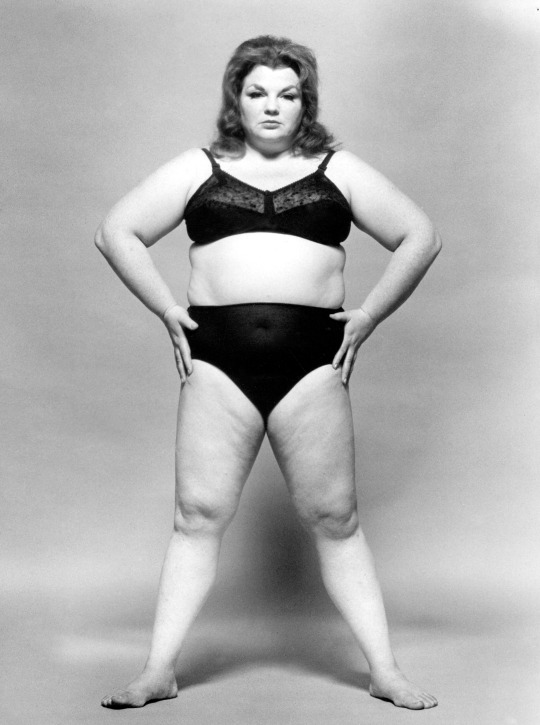
88 notes
·
View notes
Text
Great article about Paul Schrader’s The Card Counter - a poker movie that’s not really a poker movie...
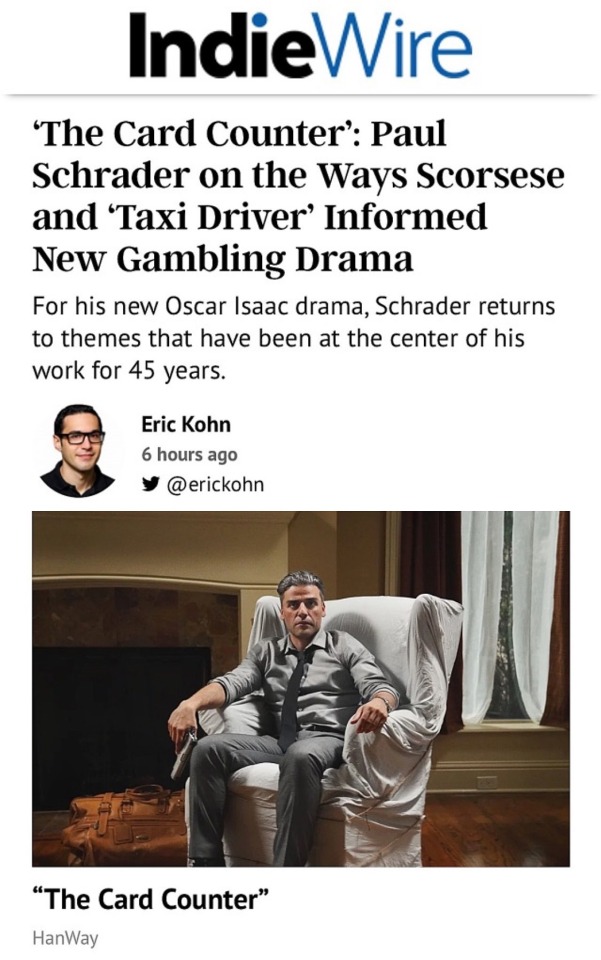
Some filmmakers write a hit movie and spend the ensuing years trying to escape its shadow. Paul Schrader never flinched. Forty-five years after his “Taxi Driver” script put him on the map, the writer-director has developed a body of work loaded with alienated anti-heroes compelled to violent and reckless extremes for the sake of a higher calling.
That includes “The Card Counter,” in which Oscar Isaac plays guilt-stricken Abu Ghraib vet William Tell, a man with a gambling addiction compelled to help the revenge-seeking son (Tye Sheridan) of a former colleague. Taking justice into his own hands, Isaac’s William Tell slithers through the Vegas strip in search of questionable salvation, not unlike a certain Vietnam vet named Travis Bickle did from the driver’s seat. As if to cement the comparisons, “The Card Counter” features Martin Scorsese as an executive producer, marking the first time the two men share a credit since 1999’s “Bringing Out the Dead.”
For Schrader, “Taxi Driver” comparisons are inevitable in all his work. “My tendency is to look for interesting occupational metaphors,” Schrader said in a recent interview. “‘Taxi Driver’ hit the bull’s eye of the zeitgeist and it doesn’t die. There’s no way I could’ve planned for that, but it does inform the stories I tell.”
At 75, Schrader continues to churn out movies much like his compatriot Scorsese, albeit on a much smaller scale. “The Card Counter” is the latest illustration of the secularized Christian dogma percolating through his work. “Our society doesn’t like to take responsibility for anything,” he said. “But I come from a culture where you’re responsible for everything. You come into the world soaked with guilt and you just get guiltier.” In his own prickly fashion, Schrader makes movies steeped in empathy for lost souls in search of redemption despite the daunting odds. “We’re all certainly capable of forgiveness,” he said, and chuckled. “Anyone who says otherwise is wrong.”
The “Taxi Driver” dilemma looms large in nearly all of Schrader’s work, from the dazzling high-stakes activism of “Mishima: A Life in Four Chapters” all the way through Ethan Hawke’s eco-conscious priest in “First Reformed.” While the latter, Oscar-nominated effort brought Schrader new fans, “The Card Counter” is an even more precise distillation of his aesthetic — a moody, philosophical drama about the vanity of the personal crusade.
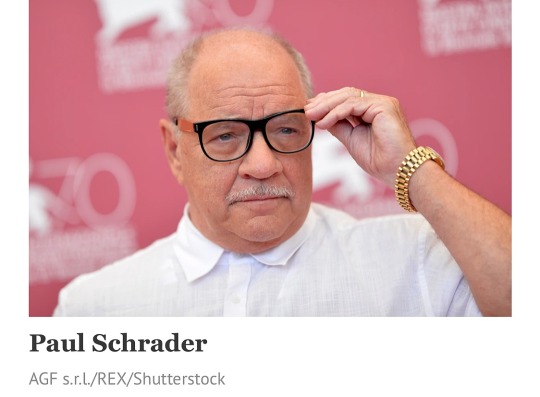
Schrader, who has labeled his homegrown character studies as “man in the room” dramas, embraces the parallels as usual. “There is this kind of myth that the taxi driver was this friendly, joking kind of guy who was a character actor in movies,” he said. “But the reality is that it’s a very lonely job, and you’re trapped in a box for 60 hours a week.” He saw the same logic with gambling, a wayward profession generally depicted in the movies in the context of escapist romps, rather than the somber rituals that afflict most players. “I thought about the essence of playing cards every day, or sitting in front of a slot machine. It’s kind of zombie-like,” Schrader said. “You see commercials of people in casinos laughing. But it’s a pretty glum place. Today with slots you don’t even have to pull the lever. You just sit there and let the numbers roll.”
The gambling figure led Schrader to the bigger picture of his character’s conundrum. “I was wondering why someone would choose to live in that sort of purgatory,” he said. “He doesn’t want to be alive, but he can’t really be dead, either. What could cause that? It can’t be a simple crime, murder, or a family dispute. It has to be something unforgivable. And that was Abu Ghraib.”
After the fallout of that debacle, William did time in a military prison, and reenters society before the movie begins. That was a world the filmmaker wanted to understand in clearer terms. Though Schrader has received blowback for his controversial Facebook posts in the past, in this case, the platform was an asset: He used it to track down soldiers who had done time in the United States Penitentiary in Leavenworth, the only military prison in the U.S., to better understand the initial claustrophobic world that Tell endures, as well as the conflict between the justice he’s received and what he deserves. “This man has been punished by his government, set free, and paid his due, but he doesn’t feel that,” Schrader said. “What does he do then? How does he fill his time? That’s how it all began.”
Schrader himself toyed with gambling when he lived in Los Angeles early in his career, but soon gave it up. “I very quickly realized I was only interested in gambling if it was really dangerous and I didn’t want to expose myself to that kind of danger,” he said. Years later, though, the experience helped inform his story. “There is this whole fantasy of gambling movies from ‘The Cincinnati Kid’ to ‘California Split,’” Schrader said. “But poker is all about waiting. People will play 10 to 12 hours a day and two to three times a day, a hand will happen where two players both have chips. Now you’ve got a face-off. But that doesn’t happen very often. Most guys who are there are running the numbers, the probability.”
He envisioned “The Card Counter” as a repudiation of the traditional poker movie, which builds to the giddy release of a final tournament. When that moment arrives in the movie, Schrader takes the movie in a bleak, shocking new direction. “It’s not really a poker movie — that’s a red herring,” he said.
William is immersed in his casino journey when he encounters Cirk (Sheridan), the crazy-eyed son of another Abu Ghraib soldier who committed suicide. Cirk blames the soldiers’ former commander (Willem Dafoe), and hopes to loop William into the plan. Instead, the older man decides to take Cirk under his wing to talk him out of the act, which doesn’t prove so easy. In the process, the gambler forms a curious bond with La Linda (Tiffany Haddish), a gambling agent and pimp whose icy, relentless drive to make the most out of the poker circuit brings William some measure of companionship on his wayward journey.
youtube
It should come as no surprise that the “Girls Trip” breakout is nearly unrecognizable in the role of the calculated La Linda, which is also a distinctly Schraderish touch: From his work with Richard Pryor in 1978’s “Blue Collar” all the way through Cedric the Entertainer’s supporting turn in “First Reformed,” Schrader has made a habit of seeking out comedic actors willing to play against type. That’s partly opportunistic on his part. “They’re eager to do it because they want to expand their palette, so you can get them for a price,” Schrader said, chuckling again. “That’s necessary, given the kind of films I make.” But that’s not all: “They will always find a way to be interesting, even when they’re not getting a laugh.”
Which is not to say that the process comes easily to them. Haddish recently told the New York Times that Schrader had to coach her out of speaking in a comedic sing-song. The filmmaker put it in blunter terms. “On the first reading of the script we had, frankly, she wasn’t very good,” he said. “I told her to go back and read every single line without emotion. Then I said, ‘You’re not going to do that in front of the camera, but you can’t hit every line either. So let’s pick five or six lines you can hit where you get a smile or reaction.’ Quickly she got that it was a different rhythm.”
As for Isaac, whose disquieting turn suggests a maniac lingering just beneath the surface, Schrader once again turned to metaphor. “I told him to imagine himself on a rocky coast in the ocean,” Schrader said. “Waves are going to come up and get you all day every day. They’re going to try to batter you. Let them. The waves will go away. You’ll still be there. Don’t compete. In the end, the rocks will win. You have to learn to trust that the way these things are put together has more power than the individual movement.”
William’s routine includes an odd ritual in which he covers all the furniture in his various Vegas hotel rooms with white paper. While the motivation is never explained, Schrader said it stemmed from an experience with production designer Ferdinando Scarfiotti on the set of 1982’s “Cat People,” when Schrader realized the man was doing the same thing. “He said, quite simply, ‘I have to live here surrounded by these ugly hotel furnishings,’” Schrader recalled. The concept inspired the new movie’s most compelling visual motif. “Casinos are very ugly places. There are no exceptions,” Schrader said. “Often you aspire to finding pockets of beauty and there weren’t really any here except the only place he could control, which was his hotel rooms, where he could privatize his visions. I came up with this ritual for him to control those visuals.”
At a certain point, Schrader himself couldn’t control the visuals of “The Card Counter” for more prosaic reasons: After an extra tested positive for COVID-19, the production shut down last March, with five days of shooting left, and couldn’t resume until July. Though Schrader initially took to Facebook to fume at his producers, the pause eventually opened up an opportunity to tweak his vision. “I edited the film and put in placeholders for the five or six scenes of consequence that I hadn’t shot,” he said. “I didn’t have a fully finished film but I could screen it for people. Normally you only get that privilege if you have a big-budget film and you’re allowed reshoots.” The early audience included Scorsese, who provided a crucial note. “I asked Marty, ‘What am I missing?’ He said to me that the relationship with Tiffany and Oscar was too thin. So I rewrote those scenes.”
Schrader asked Scorsese to take on the executive producer credit as a favor. “I said, ‘Marty, wouldn’t it be nice to share a card again? I thought it would help sell the film but it would also be a cool thing to do after all these years,’” Schrader said. “Then a couple of weeks later his agent called wanting to work out a deal. What deal? I asked Marty and he said yes. That’s the deal!” Now, the pair are trying to collaborate on a new long-form TV series based on the Bible, though the timing has been delayed by production on Scorsese’s upcoming “Killers of the Flower Moon.”
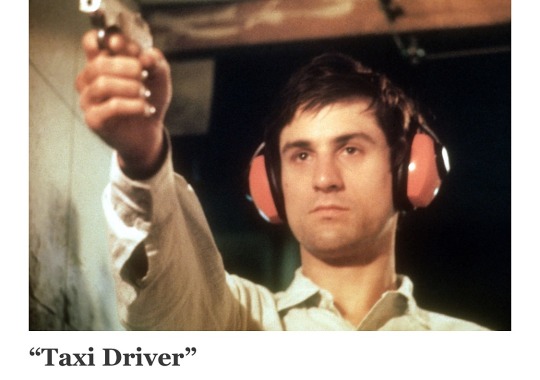
In the meantime, Schrader has been mulling over the way “Taxi Driver” not only continues to inform his storytelling but the world at large. “Hardly a week goes by that I don’t notice or hear some reference to it,” he said. “But I don’t know how you’d tell such a story today. A number of writers have tried and I don’t think they’ve succeeded because it has to come out of a certain place and time. We have plenty of these incels around, but they’re not as original or revealing as they were 45 years ago when that character came on the scene. I wouldn’t know how to write about it.”
Instead, his next project is a love triangle called “Master Gardener,” which he hopes to shoot in Louisiana before the end of the year. He has several other potential scripts ready to go after that. And while he has expressed trepidation about the future of cinema in the past, he’s not convinced that audiences have given up on it yet. He recalled a conversation he had with Cedric the Entertainer when “First Reformed” made the rounds. “He said off-handedly to me, ‘You know, I didn’t realize there were so many people who liked serious movies,’” Schrader said, and chuckled once more. “Well, yeah, there are.”
“The Card Counter” premieres next week at the Venice Film Festival. Focus Features releases on September 10, 2021.
###
#oscar isaac#the card counter#paul schrader#martin scorsese#tiffany haddish#tye sheridan#willem dafoe#taxi driver#master gardener#indiewire
35 notes
·
View notes